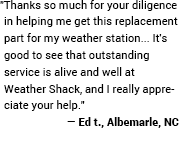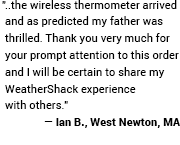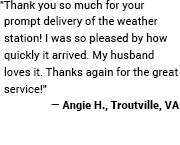
Digital Weather Station Console
Setting Up the Indoor Weather Station Console After completing the installation and activation of your weather station sensors (see weather station set up), the indoor console of your digital weather station will need to be set up as instructed by the manufacturer. For basic home weather stations, user input may be as simple as entering your station's time zone and the current time/date (unless your weather station has a radio controlled clock). Complete weather stations will likely also require the geographical coordinates and elevation of the station to be entered into the digital weather station console. Finding out how to determine these parameters is the focus of this article. Accurately documenting a weather station position on Earth is as important as placing the weather station instruments in the most favorable locations, especially if you intend to share your weather data. Geographical coordinates (latitude and longitude) are used as a way of identifying your station's horizontal position. These coordinates are used not only to calculate the correct sunrise and sunset times, but also to tell the station how to interpret the weather data being collected to provide a better forecast specific to your location. Elevation is a way of identifying your station vertically. This is important because barometer data must be provided with reference to sea level (standardized) so that readings are comparable, whether they're taken on a mountainside or by the ocean. Determining your position - Latitude measures distance north or south of the equator. North latitude is positive and south latitude negative if the "N" or "S" hemisphere is not designated. Longitude measures distance east or west of the Prime Meridian, an imaginary line running north and south through Greenwich, England. Degrees east longitude is positive and degrees west longitude is negative if not designated with "E" or "W" hemisphere. The target is to be within 100 feet (30 meters) of your true position. Depending on the unit, the information is typically entered into the digital weather station console as either DEG:MM:SS or decimal degrees. |
Your position can be determined in several ways:
Determining your elevation - Your elevation can be determined once you know your position (latitude/longitude), with a target of being within 10 feet (3 meters) of your true elevation. Make sure you confirm the elevation unit of measurement (feet or meters) before you enter the information. Elevation can be determined by using GPS also (be sure to let the unit stabilize before recording the reading as GPS can initially vary significantly). You can also use topo maps to determine elevation. TopoZone or TerraServer provides high resolution USGS maps for much of the United States (do verify the contour units of the map by checking the "Map/Photo Info" page). All content on the WeatherShack Education Center is Copyright 2002-2020 WeatherShack.com. This material may not be reproduced, displayed, modified or distributed without the express prior written permission of WeatherShack.com. For permission, please contact [email protected]. |














